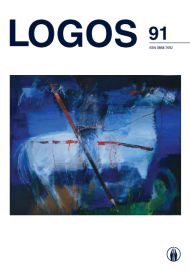Vizualinės Komunikacijos Klišės Pramogų Industrijoje: Tango Šokis Kinematografijoje
Clichés of Visual Communication in Industry of Entertainment: Tango Dance in Cinematography
Author(s): Agnieška JuzefovičSubject(s): Anthropology, Theatre, Dance, Performing Arts, Aesthetics, Film / Cinema / Cinematography
Published by: Visuomeninė organizacija »LOGOS«
Keywords: industry of entertainment; visual communication; cinematography; tango; stereotypes; dance as a struggle;
Summary/Abstract: The paper deals with a most important and large branch of the entertainment industry – commercial cinema. The author analyzes tango motifs in cinematic history and highlights the links between the Hollywood and tango dance. Screenplay writers and directors of musicals, comedies, dramas and action movies frequently switch their attention to this passionate, dramatic, however often melancholic dance. The author argues that through interest in this topic, Western film industry tends to squeeze the representation of tango into particular clichés. So called hard tango (sp. tango duro), untypical to authentic social tango dance, became dominant. Since the famous tango scene in The Four Horsemen of the Apocalypse (1921), ostentatious dipping, long steps, outstretched hands, sudden movements, head shaking and bending the woman back have become rooted in the Western cinematic tradition. This shape of tango dance has been used to mediate a passion, anger and other dramatic feelings and have been repeated in later movies such, as Sunset Boulevard (1950), Some Like It Hot (1959), Last Tango in Paris (1972), Soldier of Orange (1977), True Lies (1994) and many others. Since the last decade of XX century in the movies, such as Alice (1990), Scent of a Woman (1992), Indochine (1992), tango was depicted in more favorable context and associated with the struggle for freedom, self-assertion, though the essential clichés remain.
Journal: LOGOS - A Journal of Religion, Philosophy, Comparative Cultural Studies and Art
- Issue Year: 2017
- Issue No: 91
- Page Range: 107-118
- Page Count: 12
- Language: Lithuanian

